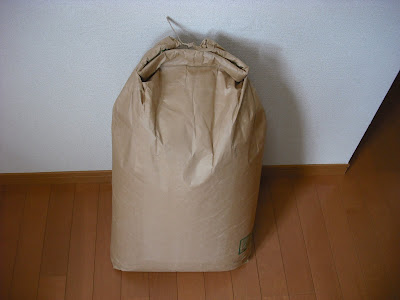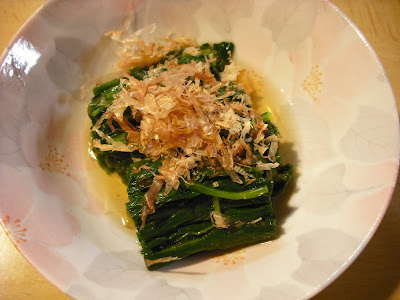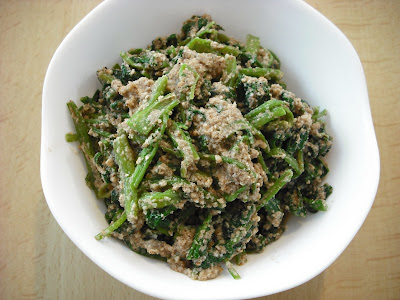何だか分かりますか?

This brown paper bag contains 30 kg brown Koshihikari rice. The rice was given to me by a brother-in-law.
この茶色の紙袋にはコシヒカリの玄米が30キロ入っています。義理の兄からもらったお米です。

There are not many Japanese, including farmers, who have a rice milling machine in their houses, and I am no exception. How should I mill the rice, then? That's easy!
農家を含めて、家に精米機がある日本人は多くありません。私も例外ではないです。では、どうやって精米すればいいのでしょうか?答えは簡単です!

All I need to do is to take the bag to a rice milling station and mill the rice by myself.
精米所に袋を持って行って、自分で精米すればいいんです。
Such milling stations are everywhere in rural areas of Japan.
このような精米所は日本の田舎ではどこにもあります。

You first put your rice in the hopper. By the way, this particular milling machine is quite sophisticated; when I stood in front of it, a woman's voice was heard, asking to put the rice in.
まずホッパーにお米を入れます。ところで、この精米機はかなり高機能で、前に立つと、女の人の声が聞こえ、お米を入れるよう指示されます。

The sign says you must not put in white rice (naturally!), wet rice, worm-eaten rice, and so on.
この標識には、白米(当然!)、ぬれたお米、虫食い米などは入れないでと書かれています。
Then, you put 100 yen per 10 kg. Then, press one of the buttons: No-wash, super white, standard, and 70%-milled. I pressed the Standard button, as usual.
次に、10キロにつき100円入れます。次に、次のうちどれかボタンを押します: 無洗米(むせんまい)、上白(じょうはく)、標準(ひょうじゅん)、七ぶ(しちぶ)。私は、いつも通り、標準を押しました。

Your rice comes out, milled.
お米が精米されて出てきます。

It takes about 3 minutes to mill 30 kg of rice.
30キロのお米を精米するのに3分程度かかります。
This particular milling machine is really sophisticated. I have never seen a machine that can produce no-wash rice! I think I'll try the no-wash button the next time.
この精米機は本当に高機能です。無洗米ができる精米機は見たことがありません。次回は無洗米ボタンを試そうと思います。

Resultant white rice:
出来上がった白米:

When milled, brown rice will lose 10% of its weight. Thus, 30 kg of brown rice will result in 27 kg of white rice.
玄米を精米すると、重さが1割減ります。従って、30キロの玄米は27キロの白米になります。






















































